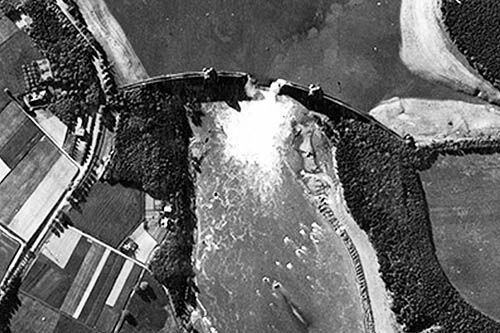
When the two base pins were in line you dropped your bomb
Johnny Johnson, Dambusters veteran, explains what his bomb-drop training for the raid entailed.
"The bomb-aimers had to make their own bombsight and it consisted of a triangle of plywood with a peg in each angle. The distance between the two base pins had to be specific and the distance between the base and the apex pin had to be specific. When we were dropping practice bombs on the bombing range, instead of a normal target, two poles were erected and they too were a specific distance apart. The practice was you had the single pin up to your eye and you directed the pilot until the two base pins were in line with those two poles, then you dropped your bomb."
Johnny also goes into detail about the different bodies of water around the UK that his crew used to frequent for practice bombing in the weeks running up to the raid, simulating the dam runs that were yet to be revealed to them.
"Derwent Water in Derbyshire had towers, so we used those towers as the marker points. Uppingham Lake, in what was then Rutland, we used as well – that didn't have towers, so again they put up a couple of posts for us and we used those for sighting and we were allowed to drop practice bombs on those reservoirs. Other crews certainly went up to various other dams throughout the UK."
This blog is dedicated to the memory of Sergeant Charles Jarvie, an air gunner with 617 Squadron on the Dambuster raid, who was killed in action on May 17, 1943, age 21.